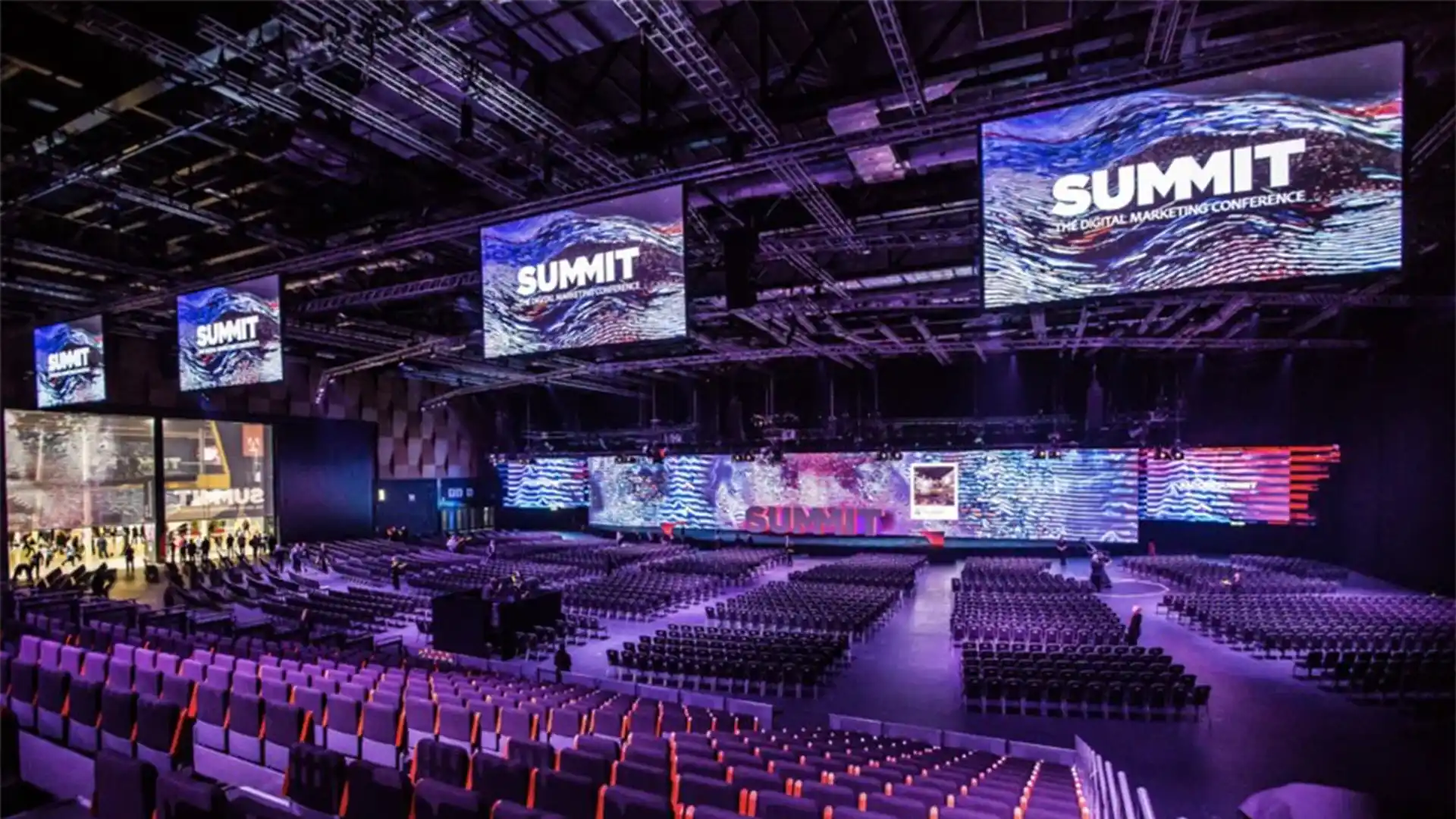
In today’s visually immersive event landscape, stage LED displays have become essential for delivering unforgettable experiences. Whether you're organizing a high-energy concert, a corporate conference, or an experiential brand launch, selecting the right LED display can dramatically influence audience engagement and overall production quality.
This guide walks you through everything you need to know when choosing a stage LED display — from technical specifications to creative applications like transparent and holographic screens.
Before diving into technical specs, start by identifying your event's core needs:
Venue type: Will the display be used indoors or outdoors?
Audience size and distance: What is the optimal viewing range?
Content type: Will you show live feeds, video playback, or interactive content?
Budget constraints: Balance visual performance with cost efficiency.
Understanding these factors will help narrow down suitable options and avoid overspending on unnecessary features.
Pixel pitch is one of the most critical aspects affecting image quality. It refers to the distance between individual LED pixels, measured in millimeters. The lower the pitch, the higher the resolution and clarity.
P1.2–P2.5: Ideal for front-of-stage close-up viewing
P2.5–P4: Suitable for mid-sized venues like conference halls
P4–P10: Best for large-scale outdoor events and stadiums
A general rule of thumb is that the minimum viewing distance should be at least 3 times the pixel pitch for comfortable visual perception.
Today’s event industry demands innovation. Consider incorporating these cutting-edge display solutions:
Perfect for preserving visibility while enhancing aesthetics, transparent LED screens are ideal for retail, museums, and stage design. Available in both indoor and outdoor versions, they provide unique visual effects without obstructing sightlines.
Engage audiences directly using touch-sensitive technology. These displays are perfect for product showcases, exhibitions, and interactive presentations.
Create stunning 3D visuals that appear to float in mid-air. With wide-angle visibility and deep contrast, holographic displays offer futuristic appeal for premium events.
When setting up LED displays at events, environmental conditions can significantly affect performance and safety.
Weather Resistance: Outdoor screens should have at least IP65 rating.
Brightness Levels: For daylight use, select displays rated at 1500–2500 nits.
Thermal Management: Ensure built-in cooling systems for prolonged operation.
Choosing the right enclosure and placement helps maintain consistent performance under varying conditions.
Proper installation ensures both safety and visual impact. Key considerations include:
Structural Load Limits: Check ceiling or rigging weight capacity
Quick Mount/Dismount Solutions: For time-sensitive setups
Modular Design: Allows easy replacement of faulty panels
Technical Support Availability: In case of last-minute issues
Partnering with experienced technicians is recommended for complex installations, especially for curved or suspended displays.
Even the best hardware cannot compensate for poorly optimized content. To ensure your message shines:
Use 4K/8K compatible media whenever possible
Employ real-time control software for dynamic adjustments
Enable multi-screen synchronization for seamless transitions
Integrate ambient light sensors for adaptive brightness control
Well-matched content enhances immersion and maintains professional polish throughout the event.
Event technology evolves rapidly. When investing in a stage LED system, choose solutions that offer:
Upgradable control systems for future compatibility
Expandable configurations for growing event spaces
Universal mounting options for flexible reuse
Energy-efficient LED modules to reduce operational costs
These features ensure your investment remains relevant and adaptable for years to come.
Q1: How long do modern LED displays last?
High-quality LED panels typically last over 100,000 hours with proper maintenance.
Q2: Can stage LED displays be curved?
Yes, flexible bar-type LEDs allow for creative curved designs and wraparound visuals.
Q3: How early should I book LED equipment?
For complex setups, plan ahead and book at least 6–8 weeks in advance.
Q4: What's the difference between indoor and outdoor LED screens?
Outdoor models feature weatherproof casings and higher brightness levels for sunlight visibility.
Q5: Are transparent LED displays visible during daylight?
Yes, next-gen transparent LEDs offer brightness up to 2500 nits, ensuring visibility even in direct sunlight.
Selecting the right stage LED display involves more than just picking the brightest screen. It requires a balanced understanding of technical specifications, venue conditions, content needs, and future scalability. By exploring innovative technologies — such as transparent, interactive, and holographic displays — and working with trusted LED solution providers, event planners can deliver truly memorable visual experiences that elevate any occasion.
Invest wisely, plan thoroughly, and let your stage lighting and digital displays take center stage.
Hot Recommendations
Hot Products
Get a Free Quote Instantly!
Talk to Our Sales Team Now.
If you are interested in our products, please contact us promptly
Reach out to our sales team to explore customized solutions that perfectly meet your business needs and address any questions you may have.
Email Address:info@reissopto.comFactory Address:Building 6, Huike Flat Panel Display Industrial Park, No. 1, Gongye 2nd Road, Shiyan Shilong Community, Bao'an District, Shenzhen city , China
whatsapp:+8615217757270